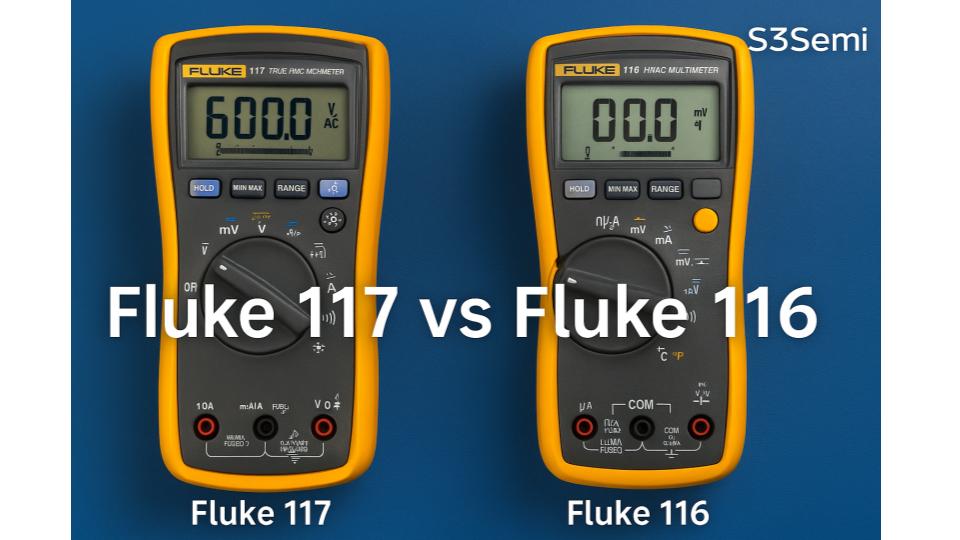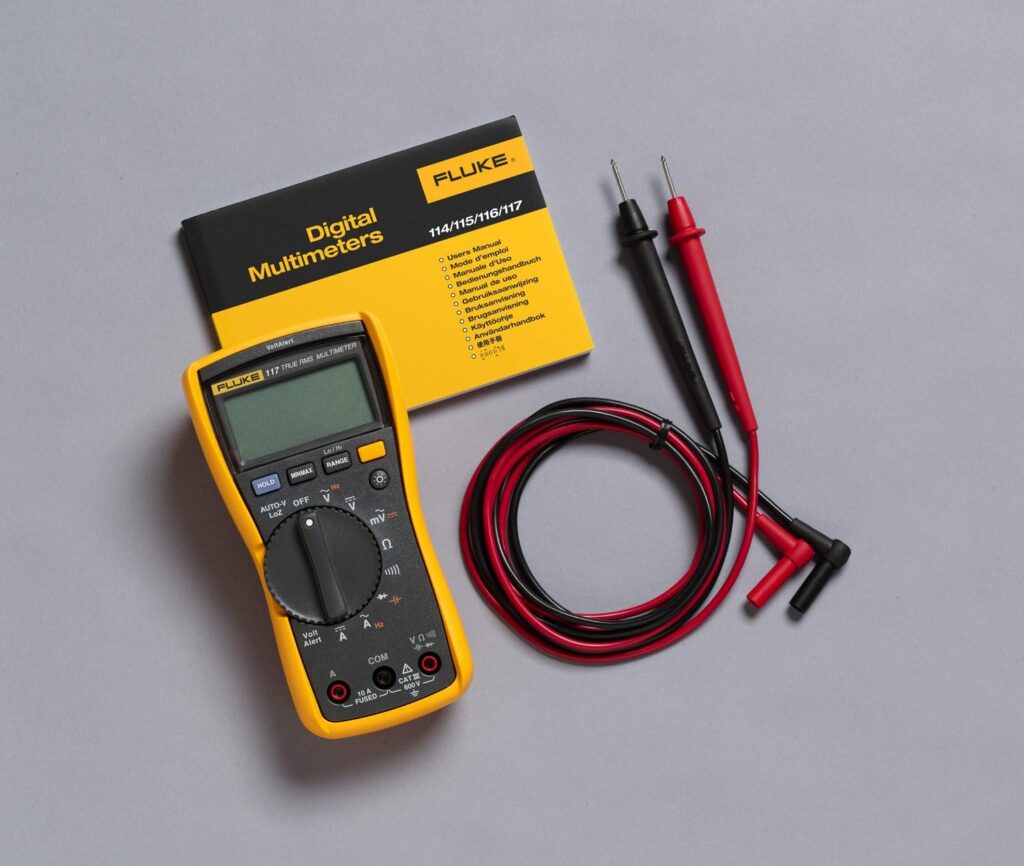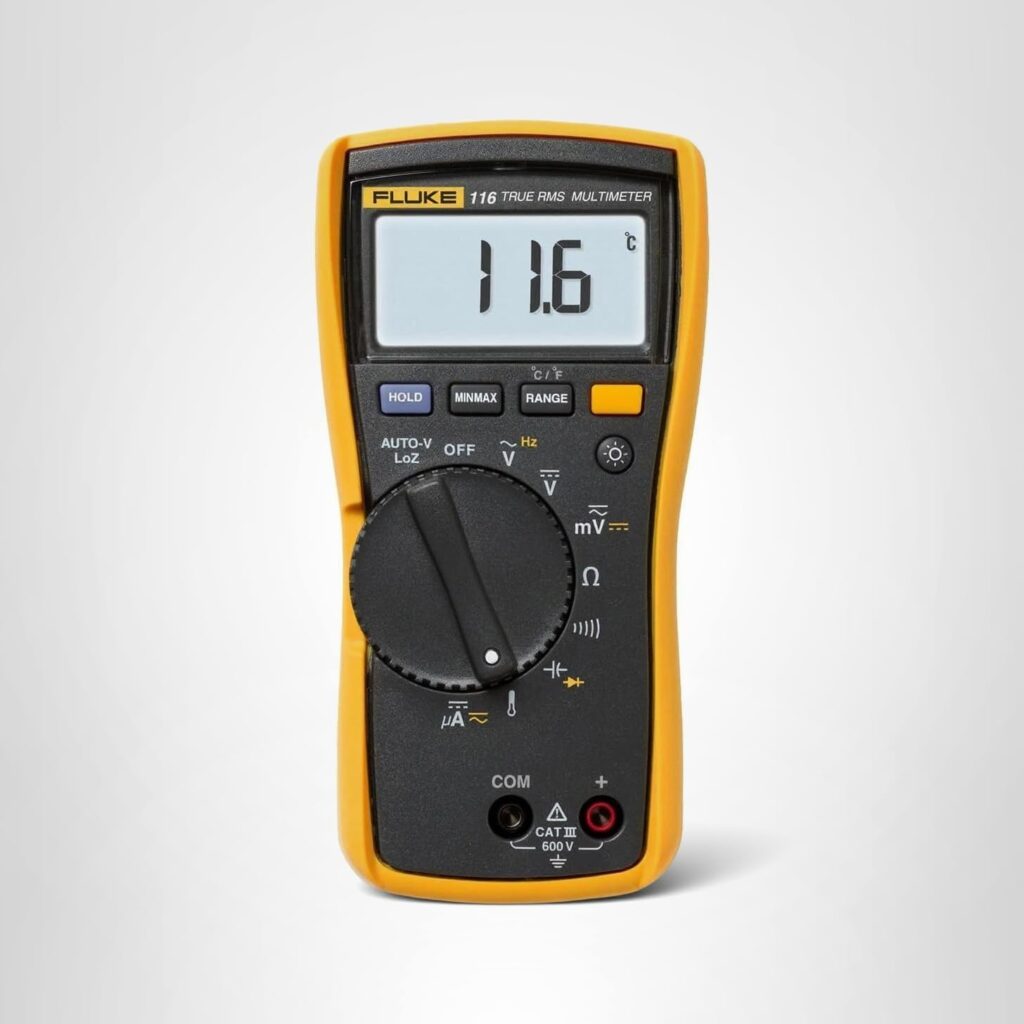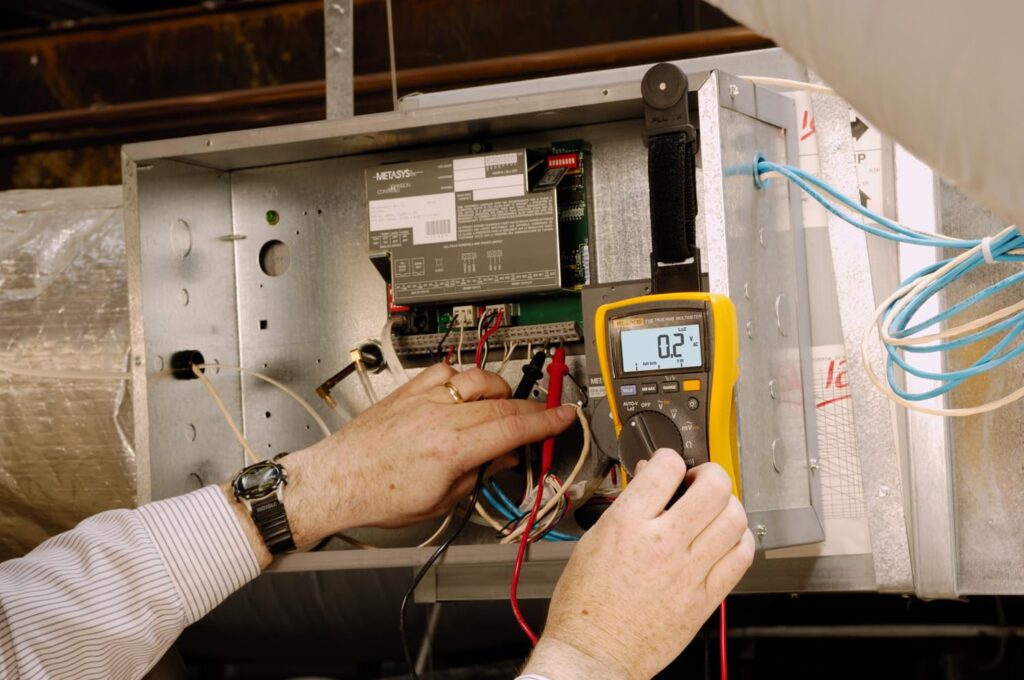When it comes to electrical troubleshooting, Fluke is one of the most trusted names in the industry. Two of its most popular multimeters – the Fluke 117 and the Fluke 116, are often compared by electricians, HVAC technicians, and maintenance professionals.
🏷️ Fluke Multimeter Deals ⭐⭐⭐⭐
Both models share similar designs and reliability but serve slightly different purposes. Let’s take a closer look to see which one fits your needs best.
🔍 Overview of the Fluke 117
The Fluke 117 is a compact, True RMS digital multimeter designed for general-purpose electrical work. It’s especially popular among electricians working in commercial and residential environments.
Key Features:
- True RMS for accurate readings on non-linear loads
- VoltAlert™ non-contact voltage detection
- LoZ (Low Impedance) mode to eliminate ghost voltages
- Measures AC/DC voltage, current, resistance, frequency, and capacitance
- AutoVolt automatic AC/DC voltage selection
- Backlit display for low-light conditions
- CAT III 600V safety rating
Best For: Electricians, building maintenance, and general electrical diagnostics.
⚙️ Overview of the Fluke 116
The Fluke 116 is designed specifically for HVAC technicians. It shares much of the 117’s build quality and accuracy but includes extra features for temperature and microamp measurements – essential for HVAC system diagnostics.
Key Features:
- Built-in thermometer for HVAC temperature measurements
- Microamp range for testing flame sensors and control circuits
- True RMS for accurate measurements on variable loads
- Measures voltage, resistance, continuity, frequency, and capacitance
- LoZ mode to eliminate ghost voltages
- Backlit display for dark work environments
- CAT III 600V safety rating
Best For: HVAC technicians, facilities maintenance, and heating/cooling system troubleshooting.
📊 Side-by-Side Comparison
| Feature | Fluke 117 | Fluke 116 |
|---|---|---|
| Target User | Electricians | HVAC Technicians |
| True RMS | ✅ Yes | ✅ Yes |
| Voltage Range | Up to 600V | Up to 600V |
| Current Measurement | ✅ Yes (10A) | ❌ No |
| Temperature Measurement | ❌ No | ✅ Yes (with thermocouple) |
| Microamp Measurement | ❌ No | ✅ Yes |
| Non-Contact Voltage (VoltAlert™) | ✅ Yes | ❌ No |
| LoZ (Low Impedance Mode) | ✅ Yes | ✅ Yes |
| Backlit Display | ✅ Yes | ✅ Yes |
| Safety Rating | CAT III 600V | CAT III 600V |
| Best Use Case | Electrical maintenance & troubleshooting | HVAC diagnostics & temperature testing |
| 💳 Pricing | 💲Check Price | 💲Check Price |
✅ Pros and Cons of Each
Fluke 117 Pros
- Non-contact voltage detection (VoltAlert™)
- Measures current up to 10A
- LoZ mode eliminates ghost voltages
- Ideal for general electrical work
Fluke 117 Cons
- No temperature or microamp measurement
- Lacks HVAC-specific features
Fluke 116 Pros
- Built-in thermometer for HVAC systems
- Microamp function for testing flame sensors
- True RMS accuracy
- Excellent for HVAC diagnostics and control circuits
Fluke 116 Cons
- No current measurement capability
- No non-contact voltage detection
- Slightly more expensive than 117
🏆 Verdict: Fluke 117 or Fluke 116?
Both the Fluke 117 and Fluke 116 deliver professional-grade reliability, but they target different users:
- Choose the Fluke 117 if you’re an electrician or general maintenance professional who needs fast, reliable voltage and current measurements with added safety features like VoltAlert™.
- Choose the Fluke 116 if you’re an HVAC technician working on furnaces, thermostats, and flame sensors- its built-in thermometer and microamp range make it the perfect tool.
👉 In short:
- Fluke 117 = Best for electricians.
- Fluke 116 = Best for HVAC professionals.





